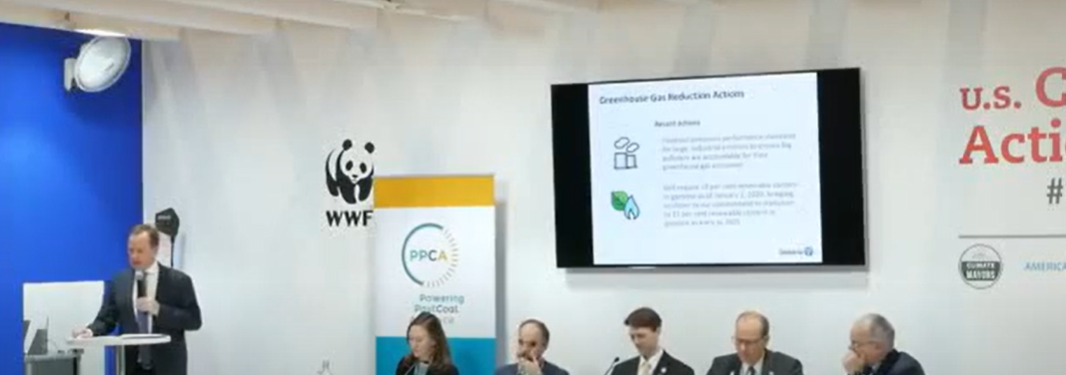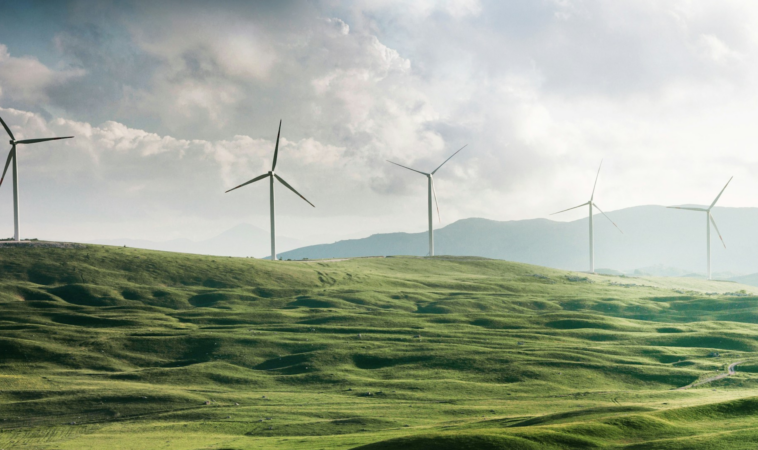
How sub-national leaders and organizations are modelling the way for a clean energy transition, and helping to advance national-level dialogue.
Two years on from its launch, the Powering Past Coal Alliance brought together sub-national members at the US Climate Action Centre at COP25 on 10 December. The event provided insight into the policies and programs that sub-national governments deploy to achieve emissions reductions, while empowering a just transition.
Ontario’s experience rapidly closing it’s coal
Minister Jeff Yurek, Ontario Ministry of the Environment, Conservation and Parks gave a speech about Ontario’s rapid closure of coal.
Rocky Mountain Institute joins the Powering Past Coal Alliance
Jules Kortenhorst, CEO, Rocky Mountain Institute, announced that the Rocky Mountain Institute was partnering with the Powering Past Coal Alliance, and spoke about the efforts of US actors in powering past coal.
Panel Discussion
How can states, regions, and cities take the lead on developing emissions reduction methods in the absence of national policy?
Aitor Urresti González, Director General for Energy Transition, Government of the Balearic Islands explained that in the case of Spain, energy is managed from central government, so the Balearics didn’t have much space to take action, but they knew they needed to do something. They began working on a climate change act and energy transition in 2015 and have created a pathway to exceed 100% renewables by 2050. In January 2020 they are closing half their coal fired power plant.
Scott Glenn, Chief Energy Officer, Hawaii State Energy Office spoke about the tough goal that Hawaii’s utilities have, to bring on enough new generation to take their coal plant offline in 2022.
Commissioner Andrew McAllister, California Energy Commission explained how the state had legislated to close coal. On top of market forces, it set an “increasingly aggressive” renewable portfolio standard, a hundred percent clean energy goal, an executive order to decarbonise the whole economy by 2045, and a cap and trade program.
Chris Davis, Senior Advisor, Climate and Energy Affair, Office of Governor Jay Inslee outlined Washington State’s efforts to close coal which began in 2006, when the state achieved a closure agreement with their final coal plant. In spring 2019 the state passed a 100% clean standard, eliminating all coal by 2024, including imports of electricity from coal. By 2045, 100 percent of all electricity in the state will be fossil free.
How was an inclusive stakeholder engagement and consultation process used to support the implementation of policies and programs, as well as a Just Transition?
Chris Davis, Senior Advisor, Climate and Energy Affair, Office of Governor Jay Inslee, referenced the closure of Centralia coal fired plant, the last major coal facility in the State whose 2024 closure date was partly chosen to align with the retirement age of many of those working there.
Scott Glenn, Chief Energy Officer, Hawaii State Energy Office, took a slightly different point of view. Hawaii doesn’t have a cap-and-trade program but instead consider the avoided annual costs of importing a billion dollars worth of coal from Indonesia, to help pay for the transition.
What factors were critical for success and what issues posed the toughest challenges? What lessons can other states, regions, and cities learn from your example?
Aitor Urresti González, Director General for Energy Transition, Government of the Balearic Islands stressed the importance of knowing what worries stakeholders and how to to take on board their expectations.





